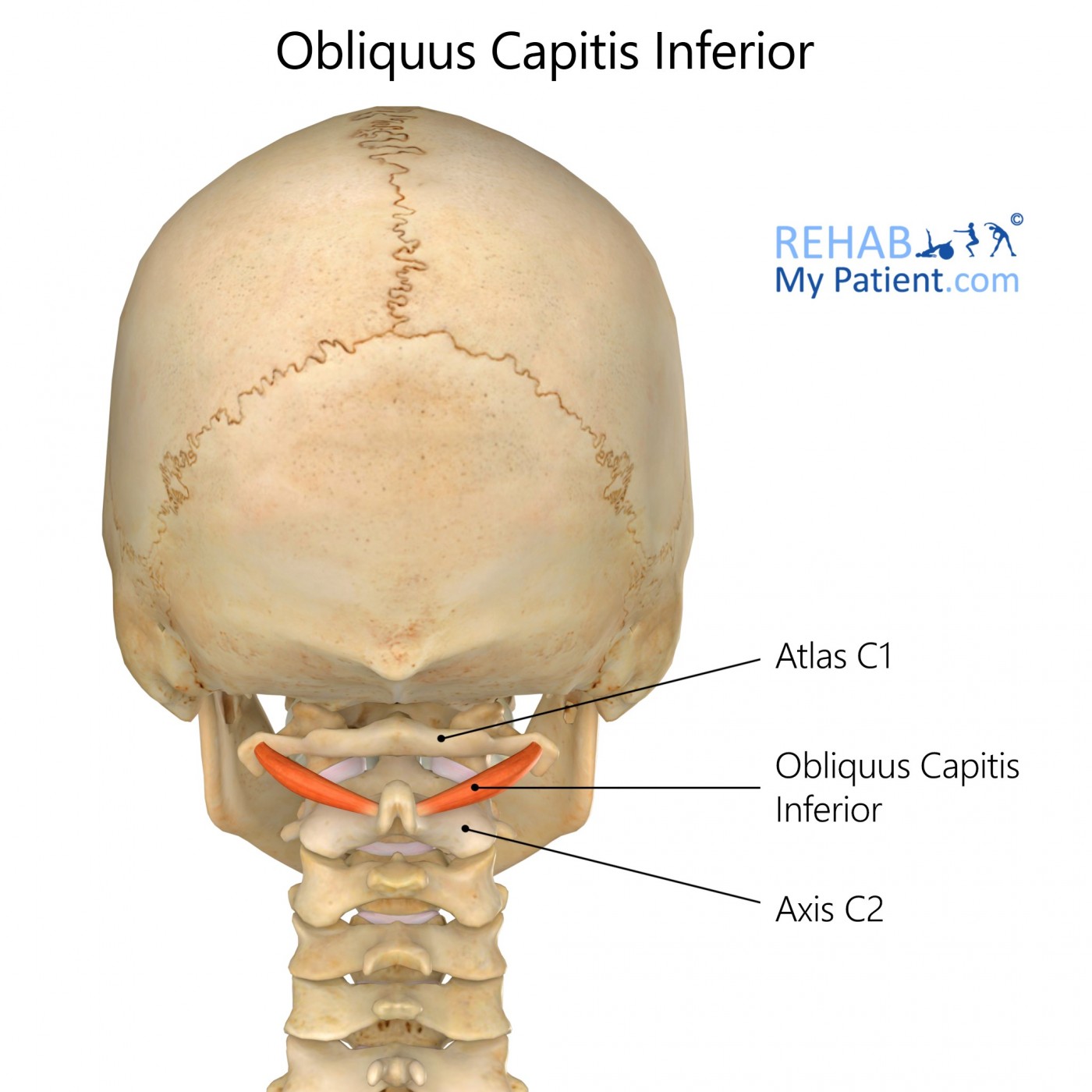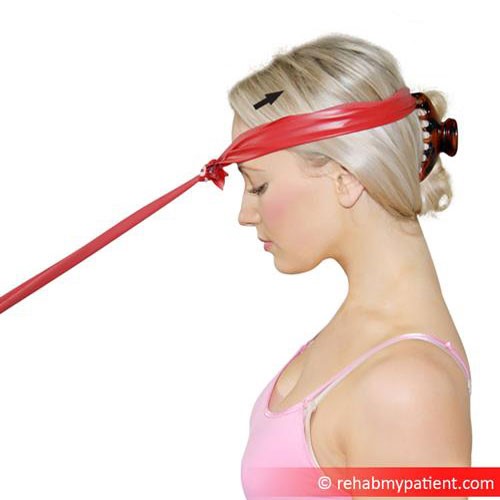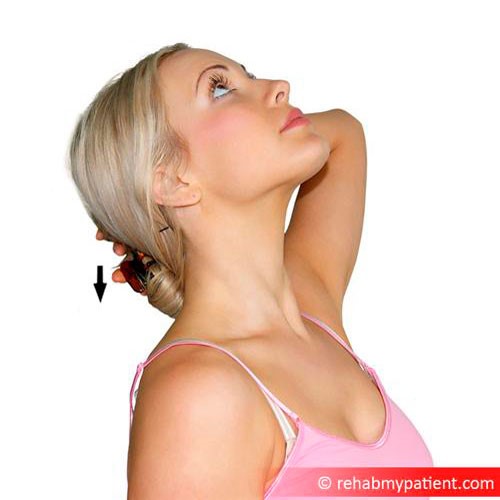
General information
Obliquus capitis inferior is a muscle of the lateral sides of the neck that slant downward.
Literal meaning
Lower slanting muscle of the head.
Interesting information
Obliquus capitis inferior is a skeletal muscle of the neck that is responsible for tilting and turning the head from side to side. This muscle is part of the suboccipital muscles of the neck. It is the only suboccipital muscle that does not attach to the skull.
Injury to the suboccipital muscles may occur during excessive movement, tilting of the head, or propping the head up with the hands while lying down. Symptoms that may occur with suboccipital muscle overuse include headache from the back of the neck up into the head, migraine headaches, and a stiff neck. These symptoms may contribute to other ailments like Temporomandibular Joint Disorder, colds, sinusitis, tiredness, eyestrain, and food allergies.
Cervical dystonia is a rare condition that affects the obliquus capitis inferior muscle, causing the head to jerk involuntarily without warning to either the left or right, or tilt from ear to shoulder, or back and forth. This painful disorder may cause neck strain and cramping or headaches. Causes for the disorder are currently unknown but thoughts are that certain anti-psychotic medications or neck injuries may contribute to the disorder. In the past, the utilisation of different types of drugs have helped treat the condition, with the most common being the Botulinum toxin. Other treatments include the use of Parkinson’s disease drugs, like Cogentin, muscle relaxants, and pain medications. Alternative treatments include neck exercises, neck braces, and stress relief techniques. In rare circumstances, the utilisation of selective denervation surgery is available. During the surgery, cutting of the nerves or muscles that cause the dystonia may correct the distorted posture.
Origin
Spinous process of the axis.
Insertion
Transverse process of atlas.
Function
Bilateral contraction - Atlantooccipital joint: Head extension.
Unilateral contraction - Atlantoaxial joint: Head rotation (ipsilateral).
Nerve supply
Posterior ramus of spinal nerve C1 (suboccipital nerve).
Blood supply
Vertebral artery.
Occipital artery.

Relevant research
Different muscles of the neck may affect cervical dystonia. Studies show that the obliquus capitis inferior (OCI) affects 75% of cervical dystonia patients. Previous research states that because the muscle is hard to reach, treating OCI with botulinum toxin injection is a last resort. New research shows that the area is easily accessible with the use of ultrasound treatment techniques. Treatment of the OCI is crucial because it plays a major role in head rotation, possibly changing the course of the disorder if treated properly.
Mezaki, T. (2011). “Ultrasound-guided injection of botulinum toxin into the obliquus capitis inferior muscle”. Basal Ganglia. 1:3, 135-136.
Cervical dystonia commonly presents with head tremor and the research shows that there is muscular activity in the obliquus capitis inferior.
Schramm, A., Huber, D., Möbius, C., Münchau, A., Kohl, Z., & Bäumer, T. (2017). Involvement of obliquus capitis inferior muscle in dystonic head tremor. Parkinsonism & related disorders, 44, 119-123.
Obliquus capitis inferior exercises
Strengthening:

Neck extension exercise band
Attach an exercise band on the floor (under a table leg usually works well, or under a heavy weight), and with your neck flexed forwards, move your neck backwards into extension creating resistance in the band. You will feel a gentle contraction of the muscles at the back of your neck. Return your head to the start position and repeat.
Stretching:

Neck extension overstretch
Sitting down, tilt your head backwards and with your hands on your top of your head apply a small amount of pressure to stretch your front neck muscles. Stop your exercise immediately if you get any dizziness or blurred vision.
Sign Up
Sign up for your free trial now!
Get started with Rehab My Patient today and revolutionize your exercise prescription process for effective rehabilitation.
Start Your 14-Day Free Trial